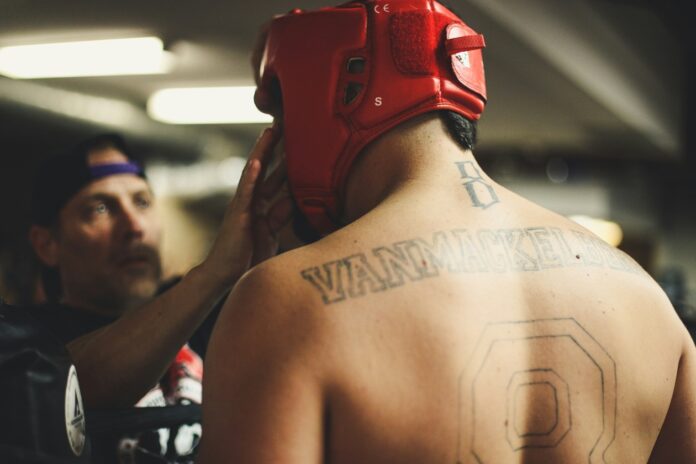Picking winners starts with reading styles and engines, not highlight reels. Octagon or ring, the contest turns on distance control, strike quality, and the ability to keep form when lungs burn. With a few practical cues, style patterns and conditioning levels become visible to the naked eye and stop feeling like guesswork.
A useful analogy comes from probability. Smart action avoids roulette thinking and leans on repeatable edges. The same mindset fits fight study. Style patterns create reliable setups. Cardio turns those setups into rounds banked. Treat tape like data, not drama, and small details begin to speak.
Reading Stance, Range, And Rhythm
Every style lives at a preferred range. Pressure boxers and swarming MMA strikers claim mid-range with volume and body work. Outside kickers, pull-counter boxers, and tall straight hitters score from long range and punish entries. Clinch artists and wrestle-boxers thrive in traffic, using frames and underhooks to slow rhythm and tax legs. The key is how often a fighter imposes the favorite pocket and how quickly adjustments appear when that pocket disappears.
Footwork writes the story. Circle steps that exit on angles beat straight retreats. Level changes that draw reactions set traps. A steady jab or feint count shows ringcraft and reveals whether distance belongs to the pressure side or the counter side. Defensive responsibility matters too. High returns with lazy exits drain gas and invite swing backs.
Core Style Signals That Predict Fights
- Jab as a steering wheel
Frequent, purposeful jabs set range, hide power shots, and buy breath between exchanges. - Feints that create data
Reactions to shoulder twitches and hip fakes expose counters and takedown tells. - Exit lanes after offense
Hitting and finishing on angles preserves form and avoids clinch drag. - Body investment early
Consistent digs to ribs or kicks to the midsection buy slower opponents later rounds. - Defensive layers
Guard, head movement, footwork in sequence beats single-move defense that collapses under combinations.
Style only matters if the engine backs it. A pressuring template without gas fades into square entries. A sniper template without legs loses distance and becomes target practice. Cardio is not just lungs; it is mechanics that survive fatigue.
Cardio As A Weapon
Conditioning shows up in posture, strike selection, and tempo control. Efficient fighters keep shoulders relaxed, breathe through exchanges, and pick shots that return them to stance. Wasteful rhythms look busy yet leak energy: wide swings, long chases, and clinches with no intent to score. In MMA, chain wrestling exposes conditioning immediately. Failed shots that end under the opponent’s hips turn legs to sand. In boxing, late-round jab volume and clean resets signal an engine that still supports form.
Camp focus matters. Altitude work and long road miles build base. Pads, drilling, and heavy bag intervals sharpen repeatable bursts. The best profiles blend both, not just one. Recovery between rounds tells the truth. Calm corners, steady nose breathing, and clear eyes equal usable gas. Hands on knees, open mouth, and blank stares point the other way.
Clear Signs Of Cardio Trouble
- Mouth open by round two
Early mouth breathing with slow lip recovery hints at shallow gas and rising acid. - Arms dropping on exits
Gloves fall after combinations, exposing counters and clinch entries. - Heavy legs after sprawls
In MMA, hips lag on resets and cage walking slows, telegraphing shots and kicks. - Jab disappears
The range tool vanishes, replaced by singles and hopeful hooks. - Stalled clinch with no scoring
Holding replaces inside work, drawing ref breaks and wasting clock without damage.
Spot two or more and the momentum forecast usually shifts. At that point, even small moments like re-centering speed or corner instructions can confirm the read.
Tape Study Checklist That Works
Start with three recent fights against comparable styles. Note preferred pocket, jab usage, counter triggers, takedown entries, and stand-up from bottom in MMA. Record body work and its timing. Track how often the fighter gets the fight back to the favorite range after being pushed off plan. Add corner quality. Some corners give crisp direction and energy management cues. Others shout volume without strategy.
Style Versus Style In Plain Language
Pressure vs counter: the foot that wins the outside angle writes the scorecards. Kicker vs boxer: the side that wins checks and jab entries controls pain and pace. Wrestler-grappler vs striker: cage craft, first layer takedown defense, and mat returns decide who spends energy and who taxes it. Southpaw-orthodox clashes reward the lead foot battle and body shots that sit under rear-hand exchanges.
Training Notes And Game Plan Clues
Professionals telegraph priorities during fight week. Open workouts that feature long feint sequences suggest range games. Heavy clinch pummeling hints at wall-and-stall plans. Pad routines with body-shot chains indicate investment below the elbows. Weigh-in posture and rehydration signs also matter. Sunken cheeks after refeed or shaky balance on stage often predict slow starts and fragile late rounds.
Putting It Together
Style defines where the fight wants to live. Cardio decides how long it can live there. A simple approach wins: measure range control, track jab and feints, watch exits, and grade the engine between rounds. In MMA, add chain-wrestling depth and get-ups. In boxing, add body work and late jab volume. With that lens, predictions feel less like noise and more like craft. The tape stops being a thriller and becomes a map, and the map points to choices that repeat.






